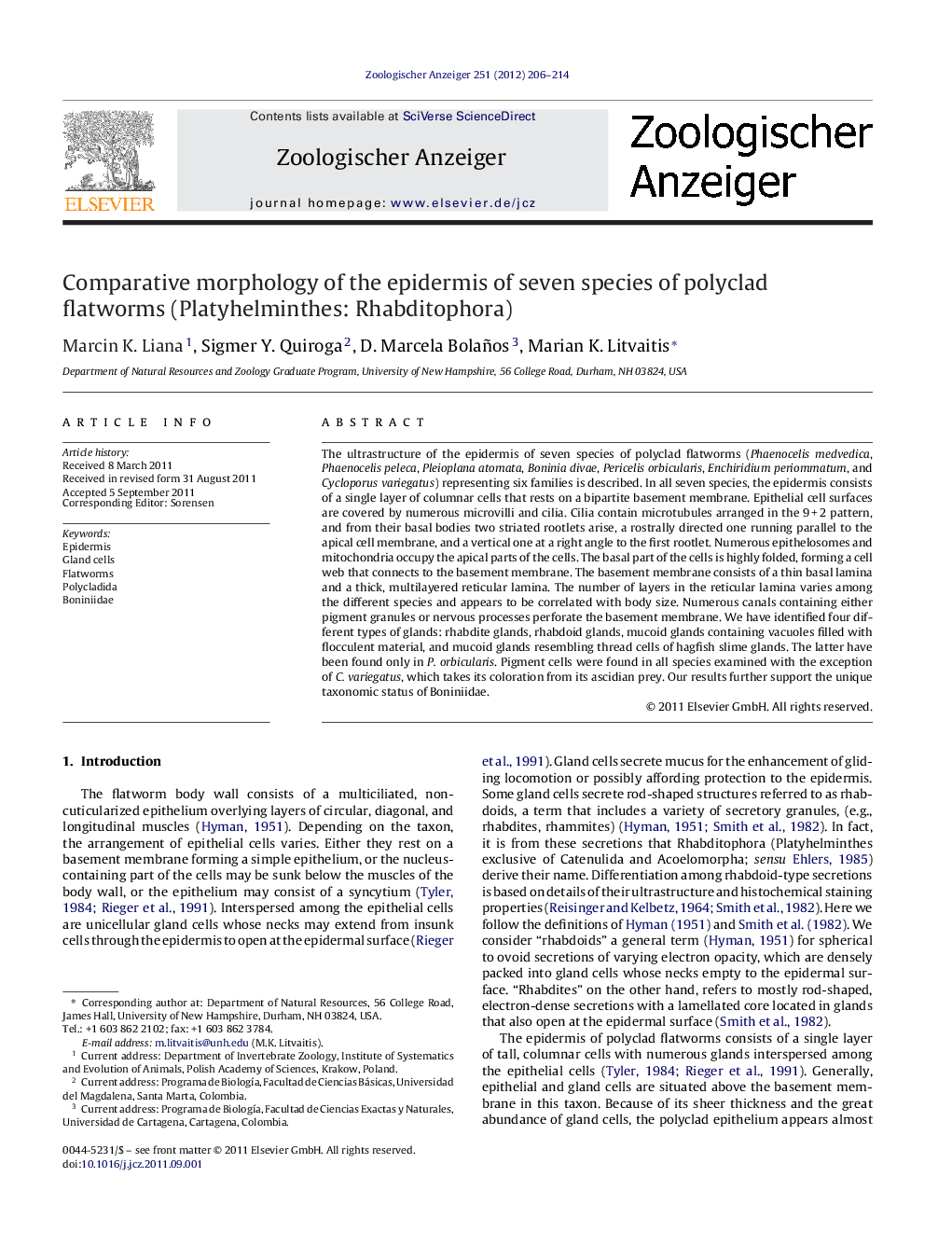| کد مقاله | کد نشریه | سال انتشار | مقاله انگلیسی | نسخه تمام متن |
|---|---|---|---|---|
| 2790718 | 1154784 | 2012 | 9 صفحه PDF | دانلود رایگان |

The ultrastructure of the epidermis of seven species of polyclad flatworms (Phaenocelis medvedica, Phaenocelis peleca, Pleioplana atomata, Boninia divae, Pericelis orbicularis, Enchiridium periommatum, and Cycloporus variegatus) representing six families is described. In all seven species, the epidermis consists of a single layer of columnar cells that rests on a bipartite basement membrane. Epithelial cell surfaces are covered by numerous microvilli and cilia. Cilia contain microtubules arranged in the 9 + 2 pattern, and from their basal bodies two striated rootlets arise, a rostrally directed one running parallel to the apical cell membrane, and a vertical one at a right angle to the first rootlet. Numerous epithelosomes and mitochondria occupy the apical parts of the cells. The basal part of the cells is highly folded, forming a cell web that connects to the basement membrane. The basement membrane consists of a thin basal lamina and a thick, multilayered reticular lamina. The number of layers in the reticular lamina varies among the different species and appears to be correlated with body size. Numerous canals containing either pigment granules or nervous processes perforate the basement membrane. We have identified four different types of glands: rhabdite glands, rhabdoid glands, mucoid glands containing vacuoles filled with flocculent material, and mucoid glands resembling thread cells of hagfish slime glands. The latter have been found only in P. orbicularis. Pigment cells were found in all species examined with the exception of C. variegatus, which takes its coloration from its ascidian prey. Our results further support the unique taxonomic status of Boniniidae.
Journal: Zoologischer Anzeiger - A Journal of Comparative Zoology - Volume 251, Issue 3, August 2012, Pages 206–214